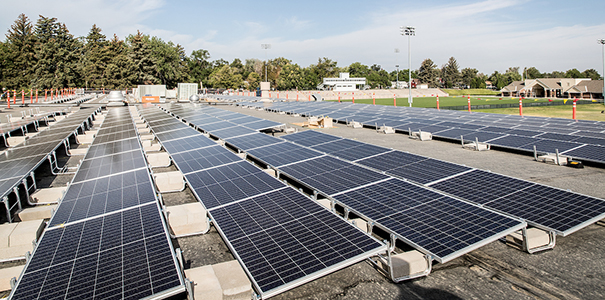UNC Makes Huge Strides in Reducing Energy Consumption and Costs

October 17, 2019
The University of Northern Colorado has saved more than $2.2 million in energy costs since 2016 through a campus-wide energy conservation program called powerED that rolled out in partnership with McKinstry. In total, UNC has reduced energy consumption by 33% including an 25% decrease of electricity use, 35% decrease of natural gas use and 23% decrease of water use.
The powerED program was implemented collaboratively with students, staff and groups within departments that emphasized behavioral changes to promote energy efficiency and sustainability. Highlights included:
- Over 700 UNC staff and students registered for a UNC People.Power.Planet account
- 720 routine actions, 332 pledges and 100 key energy-saving actions accomplished by participants, and over 80 signed up to be a Campus Leader
- Dozens of featured activities including energy use buildings tours, energy challenge between residence halls, Earth Week 2019 and more.
The UNC facilities team, in collaboration with McKinstry, has ensured efficient building operations through energy and operational optimization, such as implementing comprehensive building shutdowns over winter break.
A dashboard designed to serve as a high-level, monthly energy report provided a snapshot of site-specific energy performance, benchmarks and overall savings at UNC to inform and engage program participants.
Other Achievements
- UNC's Campus Commons was awarded Leadership in Energy and Environmental Design Gold Certification by the U.S. Green Buildings Council. The 114,000-square-foot building’s features were
designed with the environment and future in mind.
- The university was recognized by Xcel Energy for saving the most energy in the state using a self-directed program in April 2019.
-
The installation of a SmartFlower on the front lawn of UNC's César Chávez Cultural Center over the summer provides 2,500 watts of power to meet the majority of the center's need. This is the first Solar Flower to be installed on a university campus west of the Mississippi.
-
UNC and McKinstry also installed solar arrays on the roof of Parsons Hall that was funded through the Colorado Department of Public Health and Environment's Supplemental Environmental Projects (SEP) Program (see below image). The system will produce close to 4.7 million kilowatt hours (kWh) of electricity — the average consumption for a U.S. home is about 11,000 kWh annually — with estimated savings of $176,500 over the expected 20-year life of the system. In addition, the project is expected to reduce carbon emissions by 3,500 metric tons, which is equivalent to removing 749 cars being driven on roads in a year.


